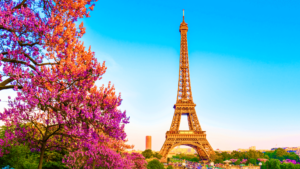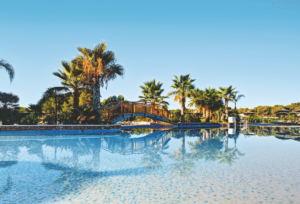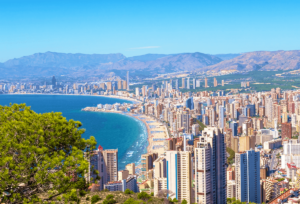In 1964, the countries of Zanzibar and Tanganyika merged forming Tanzania, the biggest country in eastern Africa. Mount Kilimanjaro is situated in the north-east of Tanzania, close to its border with Kenya. It is made up of 3 volcanic peaks; Kibo, Mawenzi and Shira. Uhuru Peak is its highest point at the summit of Kibo, an estimated 19,330 ft above sea level. Despite its location just 220 miles south of the equator, it has a permanently snowy peak. Mount Kilimanjaro is the highest mountain in Africa and has stood for a staggering 750,000 years. The shape we currently see dominating the African skyline took 250,000 years to develop and like most mountains, Kilimanjaro is the result of various volcanic eruptions, surviving several ice-ages and cutting glaciers that sculpted the mountain’s smooth valleys and sharp ridges.
Mount Kilimanjaro consists of 5 unique environmental zones forming the journey to its peak. The first 6,000 ft is a landscape of ideal farming land; the rich soil ensures prosperous growth of flowers and plants, creating the perfect habitat for many birds, insects and other animals. The second zone, between approximately 6 and 9,000 ft, is a humid rain forest. Lions, elephants, giraffes and wild dogs roam freely through the dense jungle terrain, while tropical birds share the skies with bearded vultures, gliding atop a lush green canopy of olive, fig, juniper trees and date palms. The third zone begins at just over 13,000 ft. At such high altitudes oxygen levels decline preventing the survival of most animals and plants here. Vegetation is reduced to grasses and wild flowers, and few animals other than lions, wild dogs and elands have been seen roaming this area. Rising up to the fourth zone, the climate becomes hot and dry during the day, yet freezing cold at night. Only lichen, mosses and a few grasses can survive such adverse temperatures, with just the odd rodent, bird and insect for company. The fifth and final zone will see you to the summit. The thin air and freezing conditions mean that no animals can survive here; hardy lichen are the only organisms, clinging to rocks that peak through the snow.
During the 1800s, the people living in the shadow of the mountain feared evil spirits that roamed the mountain, protecting it. It was believed they would kill anyone who tried to climb it. The evil spirits turned out to be snow and freezing temperatures, and in 1889 Hans Meyer and Ludwig Purtscheller successfully reached its summit.
Contrary to popular belief, you don’t need to be an expert to conquer Mount Kilimanjaro. Different routes have been planned for climbers of all abilities, and many companies offer professionally guided excursions to its summit. However, the journey is challenging, and even experienced climbers must take extreme care; ascending or descending too quickly can cause altitude sickness. The atmosphere at the mountain’s peak is just half of at its base, making it ever more important to be careful. All sorts of reasons give people the motivation to climb – many raise money for charity, others just do it for the physical challenge and fun. Whatever your reason for attempting this exhilarating challenge, the feeling you get upon reaching the summit is like no other; a feeling of immense pride and accomplishment will overwhelm you as you take in the breathtaking view (with not one single evil spirit in sight!)
Josh Philips from Newcastle
You may also like
mount kilimanjarotanzaniatanzania holidays





